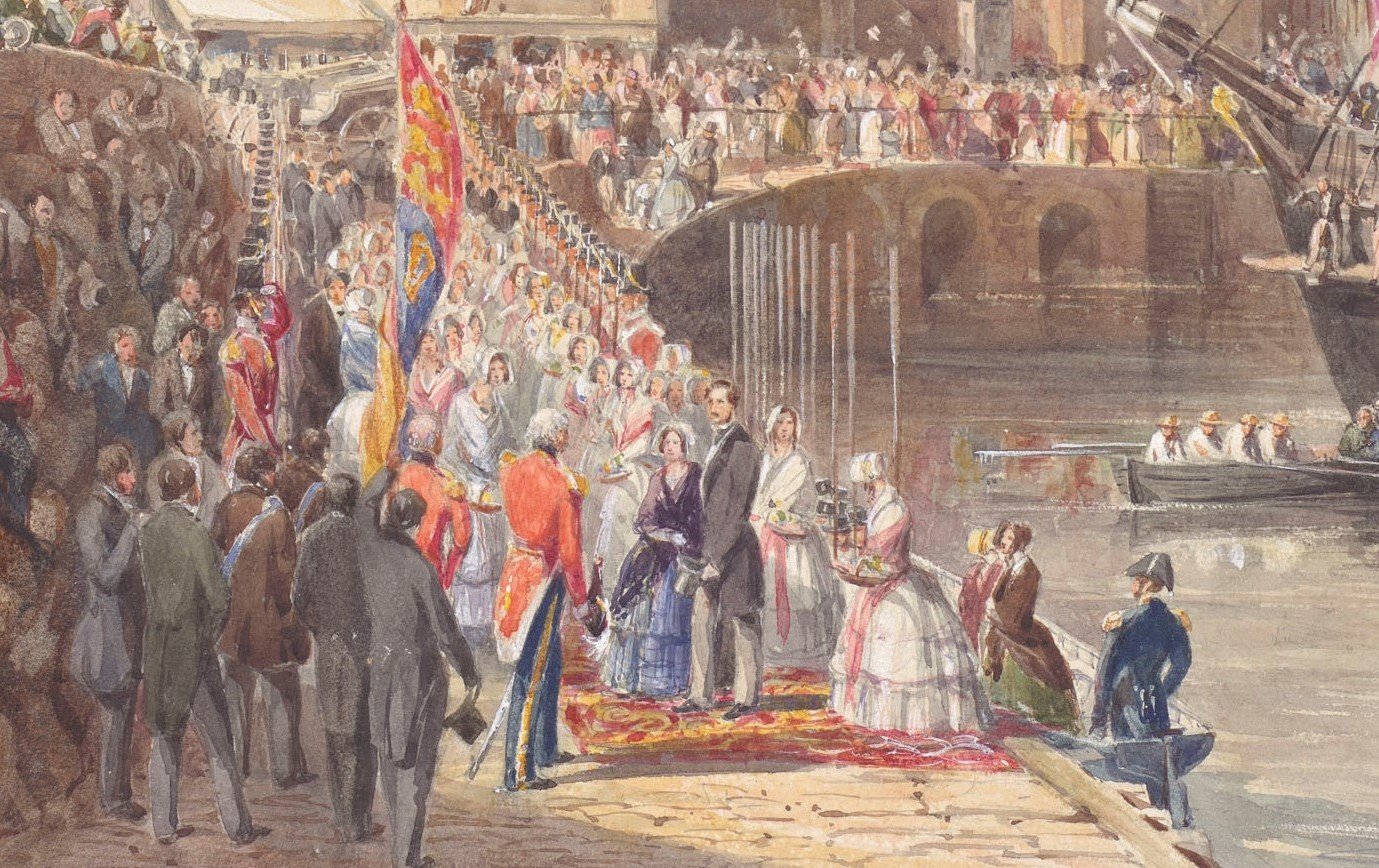
In Search of the Picturesque
Paul Stonell, Senior Collections Information Assistant (Photography), explores the growing appeal of Scotland as a tourist destination in the nineteenth century through the lens of two views of Dumbarton Castle acquired by Victoria and Albert
On the north bank of the River Clyde, nestled in a rock formed of volcanic basalt, stands Dumbarton castle. This view of the castle was commissioned by Queen Victoria from the German artist Edouard Hildebrandt and is one of a series of watercolour souvenirs he painted for her of picturesque views she enjoyed during a tour of the Scottish west coast in summer 1847.
Twenty-five years earlier, her uncle George IV became the first reigning monarch to visit Scotland for almost 200 years. The blaze of pageantry depicted in this painting by David Wilkie was masterminded by the Scottish novelist and poet Sir Walter Scott.
In the early nineteenth century, Scotland grew in popularity as a tourist destination. For those who could afford to travel there, Scotland’s mountains and lochs offered respite from the grime and overcrowding brought about by the Industrial age. The romantic appeal of the Scottish landscape drew writers, composers, artists and even Queen Victoria who went in search of the picturesque, and in 1847 wrote of the ‘poetry and romance’ of the western lochs and isles. Victoria’s decision to establish her autumn residence at Balmoral fuelled Scotland’s transformation into a fashionable resort amongst the upper and middle classes.
Dumbarton Castle became a popular tourist attraction early on; during their visit in 1803 William Wordsworth and his sister Dorothy were shown a trout that had been kept in the castle’s well for 30 years. A few decades later, the castle was photographed by the self-described ‘Artist photographer’ George Washington Wilson, ‘Photographer to Her Majesty in Scotland’. Wilson’s photographs were collected by members of the royal family and also the general public. By the 1860s, improved transport links brought people from a wider variety of social backgrounds to Scotland and the demand for photographic views rose.
Wilson deliberately chose to photograph popular tourist locations, including Loch Katrine in the Scottish Highlands. As the setting for Sir Walter Scott’s The Lady of the Lake, the loch drew large numbers of tourists eager to experience for themselves the location immortalised by one of Scotland’s most famous writers. Wilson was usually at the head of the tourist trail with his camera, keen to capture the views that so many people came to see. His photographic souvenirs of Scotland’s landscape and cities were distributed and collected by the growing numbers of tourists to those regions. As precursors to postcards, Wilson’s photographs helped reinforce Scotland’s growing popularity as a tourist destination.
Wilson was also aware of the commercial potential of stereographs, which consist of two photographs mounted side by side to create a three-dimensional effect. As such, stereoscopic photographs allowed viewers to ‘step’ into a landscape from the comfort of their own home. See below for Wilson's stereograph of Loch Katrine.







